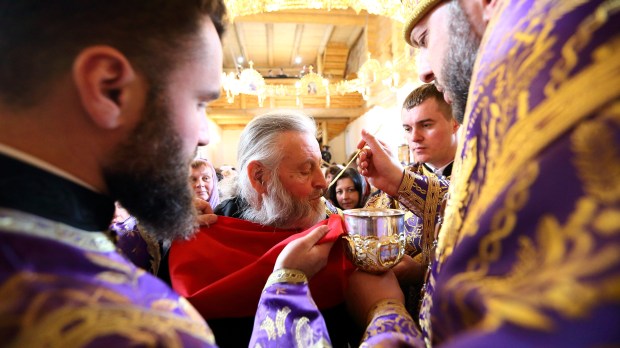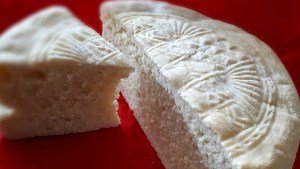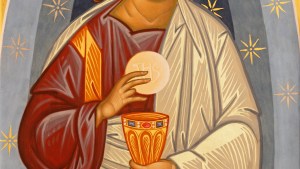In the Roman Rite, Holy Communion is typically distributed first with consecrated unleavened bread, and then secondly with consecrated wine. Very few Roman Rite parishes use the practice of intinction, which is when the priest dips the consecrated host into the chalice of consecrated wine.
This practice of intinction is much more common in the Eastern Rites of the Catholic Church, as well as in Eastern Orthodox churches.
However, what is different is that many Eastern Catholics use leavenedbread, making intinction a bit trickier.
In the Eastern tradition leavened bread represents the resurrection of Jesus, and early on they did not feel it was necessary to directly imitate the Last Supper. (Some scholars still debate over what type of bread Jesus used when he instituted the Eucharist.) They believe that the Eucharist is much more than a representation of the Last Supper and focuses on the connection to the heavenly banquet.
With this in mind, Eastern Catholics had to come-up with a solution to reverently distribute Holy Communion to the faithful, ensuring that particles of the consecrated bread and drops of the consecrated wine did not fall on the ground.
This protection of the Holy Eucharist revolves around the belief that Jesus is truly there, body, blood, soul and divinity, under the appearance of bread and wine.
As a result, a communion spoon was invented, making it easier to distribute communion reverently, ensuring no particles or drops would make it to the ground. The person receiving opens his or her mouth and tips the head back slightly. The priest drops the contents of the spoon into the recipient’s mouth, without the spoon itself touching the lips, teeth, or tongue.
It is a unique expression of Eucharistic faith that continues today in many parts of the world.



